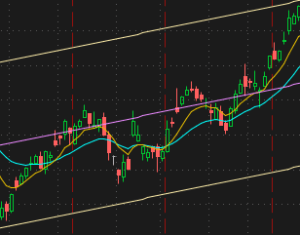In the fast-paced world of stock trading, investors are often faced with the age-old dilemma: fundamental analysis versus technical analysis. Both methodologies offer unique insights into the market, each with its own set of pros and cons. Fundamental analysis delves into the financial health and growth potential of a company, while technical analysis scrutinizes price and volume data to identify patterns and trends. Understanding the disparity between these approaches is crucial for informed decision-making in the dynamic landscape of stock trading.
Fundamental Analysis: Peering into the Company’s Soul

Fundamental analysis serves as the cornerstone of traditional investment philosophy, focusing on the intrinsic value of a company. Investors employing this approach meticulously dissect financial statements, economic indicators, interest rates, news, and qualitative factors to gauge the true worth of a stock. By scrutinizing metrics such as earnings, debt, sales numbers, and balance sheet health, fundamental analysts seek to determine the underlying value of a company.
One of the primary advantages of fundamental analysis lies in its ability to uncover unnoticed opportunities. By delving deep into a company’s financials, analysts may identify undervalued stocks that have the potential for significant growth. Moreover, fundamental analysis provides investors with the confidence to hold onto their investments for the long term, knowing that they have thoroughly assessed the company’s fundamentals.
However, fundamental analysis is not without its drawbacks. The process can be time-consuming, requiring extensive research and analysis of complex financial data. Furthermore, fundamental analysis is subjective in nature, as different analysts may interpret the same information differently, leading to varying conclusions about a stock’s true value.
Technical Analysis: Riding the Waves of Price Movements

In contrast to fundamental analysis, technical analysis takes a more quantitative approach to stock evaluation. Instead of pouring over financial statements, technical analysts focus on chart patterns, trends, support and resistance levels, and trading volume to forecast price movements. By examining historical price and volume data, technical analysts attempt to identify recurring patterns that can help predict future price movements.
One of the primary advantages of technical analysis is its speed and efficiency. Unlike fundamental analysis, which requires extensive research and analysis, technical analysis allows traders to quickly assess market trends and identify potential trading opportunities. Additionally, technical analysis provides valuable insights into trade entry and exit points, enabling traders to make informed decisions about when to buy or sell a stock.
However, technical analysis has its limitations. One of the most significant drawbacks is the lack of understanding of the underlying business. Unlike fundamental analysts, who delve into a company’s financials to assess its intrinsic value, technical analysts focus solely on price and volume data, often ignoring the broader economic and industry factors that can influence a stock’s performance. Furthermore, technical analysis can sometimes lead to analysis paralysis, as traders may become overwhelmed by the multitude of indicators and chart patterns.
Finding Harmony: A Hybrid Approach
In the ongoing debate between fundamental and technical analysis, there is no one-size-fits-all solution. The choice between these methodologies ultimately depends on the individual trader’s style, preferences, and investment objectives. While fundamental analysis is well-suited for long-term investors seeking to uncover undervalued stocks with strong growth potential, technical analysis is more suitable for short-term traders looking to capitalize on market trends and price fluctuations.
However, rather than adhering strictly to one approach or the other, many investors opt for a hybrid approach that combines elements of both fundamental and technical analysis. By leveraging the strengths of each methodology, investors can gain a more comprehensive understanding of the market and make more informed trading decisions.
In conclusion, the disparity between fundamental and technical analysis underscores the complexity of stock and options trading. While fundamental analysis assesses a company’s intrinsic value based on its financial health and growth prospects, technical analysis focuses on price and volume data to predict short-term price movements. By understanding the strengths and weaknesses of each approach, investors can find balance in their trading strategies and navigate the ever-changing landscape of the stock market with confidence.

